
Guards Armoured
-
Posts
21 -
Joined
-
Last visited
Content Type
Profiles
Forums
Blogs
Gallery
Events
Store
Posts posted by Guards Armoured
-
-
Hi Kevin,
this appears to be a cap badge for a chief petty officer in the British Royal Navy, with a King's crown (which makes it either very old, from before the mid-1950's, or very new, from this year).
Best
Robert
1 -
-
I finally managed to dig out a few post-war other ranks’ battle dress blouses that I believe to be originally badged by unit tailors.
You will note that shoulder titles, as Tony already pointed, almost touch the shoulder seams. The top edge of the chevrons is 16 cm from the shoulder seam on the RMP blouse and 18.5 cm on the Queen’s Own Buffs (perhaps to allow for extra space for the colour sergeant’s crown?).Best
Robert
1 -
I also think that bronze badges were introduced for the service dress cap in 1902. If you are interested in WW II officer uniforms, the 1934 dress regulations are the most relevant. They stipulate two bronze buttons for the cap, service dress, soft pattern (which was to be worn on active service and manoeuvres). Line infantry regiments wore bronze badges, the Foot Guards wore (and still wear) shiny ones (Grenadiers and Welsh in gold embroidery, Coldstream, Scots and Irish small but elaborate silver and enamel stars).
As Tony pointed out, the bronze badges disappeared at some point after the war, most likely in the 50’s and certainly by the time the “brigade” cap badges were introduced.
Pre- and early-war caps had, in the belief of collectors, narrower chinstraps than later ones (although I am not sure that is a general rule - the Scots Guards cap in the picture is post-war, made by royal appointment to HM the Queen and with brass Queen’s Crown buttons). I have put together a number of service dress caps from my collection for a quick photo to show differences. The one from the Buffs is particularly interesting as it is the only issued from ordnance stores and clearly dated 1945 - with a very wide chinstrap.Hope this helps
Robert
Detail of the Buffs cap
And here is a cavalry cap, made from a very different material and with plain, domed brass buttons:
The Gloucesters cap in the first picture is also from the 1950s, but still with a bronze badge, that is why I included it. The material of that badge is very different from earlier bronze or painted brown badges and a bit too shiny for the original purpose of camouflage.
1 -
insignia on battledress regulations Bouchery.pdfHi Phil,
I also thought there but must be more on spacing of badges etc., but Howard Cole in his classic books probably never thought of collectors wanting to return badges to the sleeves they had come from and none of the other publications I know seem to give measurements. With one exception: Jean Bouchery has this in "The British Soldier" - hope it will answer some of your questions.
1 -
Did you manage to rescue the three-ply shoulder boards that came with the tunic? They are the right kind, I believe, and possibly original to the tunic. All you would need then are a pair of rank stars (pips) for each and a screw-post button.
Modern versions can be purchased at military tailors but are quite pricey (and too shiny for my liking, due to the modern materials used):
0 -
Tony, is this what you were referring to?
https://www.olympiaauctions.com/sales/arms-armour/as240418/view-lot/85/
Somehow looks quite convincing ...
1 -
I have an identical shoulder title in my collection and have probably had it for 30 years now. The only other theory I have come across is that it might be a British-made tab for the US Army‘s 10th Mountain Division. The “MOUNTAIN” tab was only granted when the division was about to deploy to Italy in late 1943, so many members did not wear the tab or acquired locally made versions in Italy (often of woven construction / BeVo style). As far as I can work out the division never got anywhere near the UK during its wartime existence, so I am not sure why there would be a British-made tab. The shoulder title does not look quite right with either formation sign/patch, does it? I have added the airborne tab in the picture for comparison because it has the right dimensions and colours (white on infantry blue) and I haven’t got the correct MOUNTAIN tab in my collection. I am leaning slightly more to the US theory as the shape seems too far off to be an alternative version for the 52nd division, but hopefully there are other opinions in this forum - anyone?
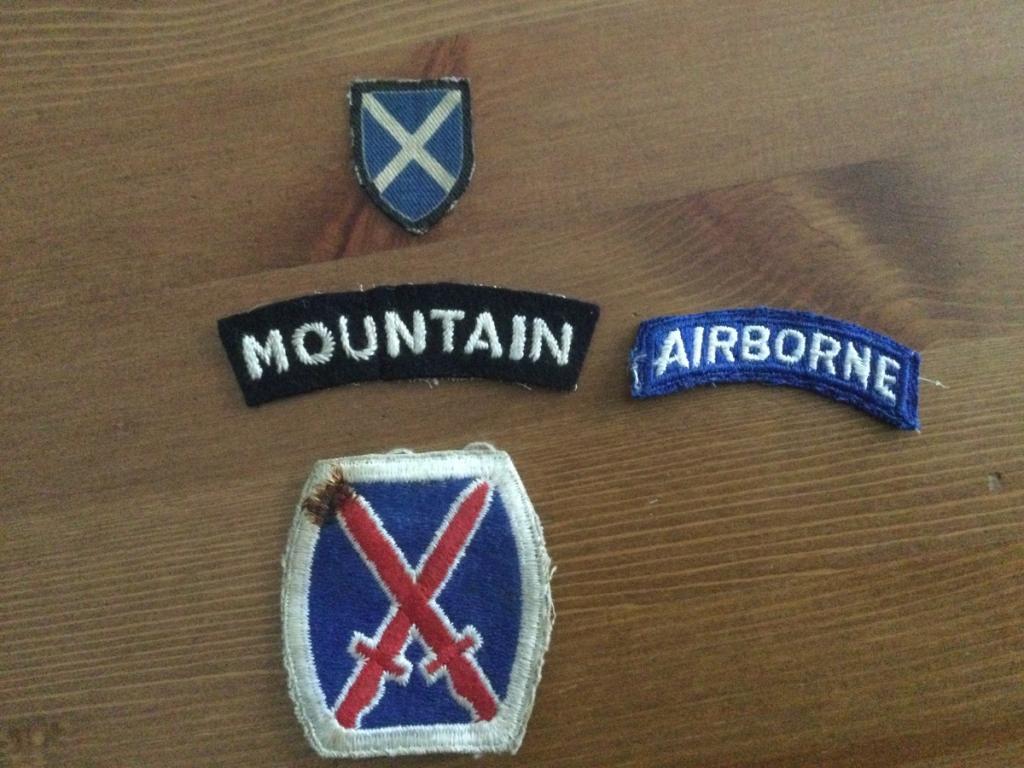 1
1 -
Not so sure what to make of the Ht C marking, but could this be an accessory for the WW II Battle Jerkin? At least the Canadian version used lift the dot fasteners …
Bad news, I‘m afraid: this shows a reproduction (!) battle jerkin, note the maker:
 0
0 -
Challenge accepted: I believe this is a pre-1957 nco’s arm badge of the 7th Queen’s Own Hussars.
Robert
0 -
What a great find! I think I have the answer to your question, the star is a proficiency badge for snco‘s introduced in 1878.
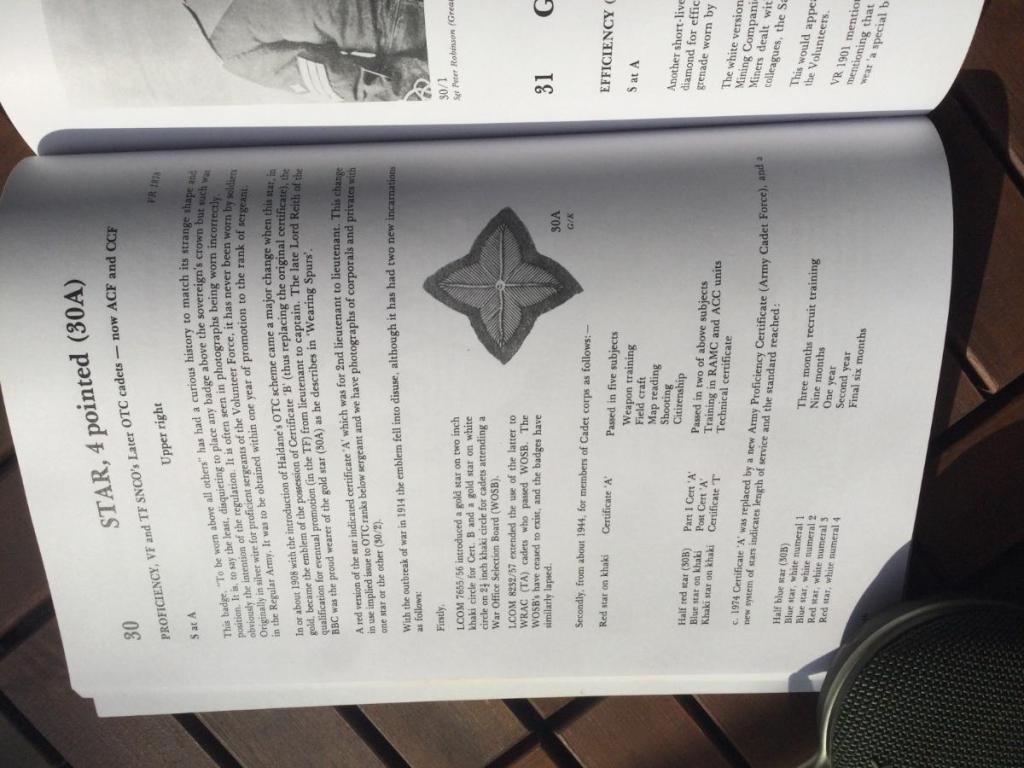 I took a quick snapshot from an excellent book on the subject, “British Army proficiency badges” by Denis Edwards and David Langley, I hope it came out alright.
I took a quick snapshot from an excellent book on the subject, “British Army proficiency badges” by Denis Edwards and David Langley, I hope it came out alright.
Best regards,
Robert
0 -
John, I believe what you have there is the star of an RQMS, worn over four chevrons (point up) in the period 1881 to 1915.
I found it listed (but sadly not really illustrated) in British Army Proficiency Badges by Denis Edwards and David Lanley (2005 reprint).
Regards,
Robert
1 -
I believe this to be for a music stand of the band of the Royal Tank Regiment.
0 -
Chris, you are probably right - but this will give Andy a different idea, just an example:
http://www.baor-locations.org/617TkTptrRegt.aspx.html
0 -
Hi Iver,
thanks for the offer - that would be great (I have just sent you a pm).
Best
Robert
0 -
-
Hi Andy,
I am referring to information gleaned from "Badges on Battledress", by Lt Col Howard Cole, published in 1953, page 30. Most BAOR formation signs were based on that worn by 21 Army Group (blue cross on a red shield) and had some additional symbols added - with the exception of Hamburg District and Rhine District, which Cole describes as blue on yellow. I do seem to remember the blue/red ones being worn in BAOR, but am still looking for a reference on these.
Best
Robert
0 -
Hello everyone,
The shade of the battledress uniforms seems very dark to me, so I am guessing they are dark blue and that the shoulder title in the picture (blue on red?) reads "M.S.O" for Mixed Service Organisation, a post-war BAOR unit driving lorries, pulling guard duty etc. and initially issued with old BDs dyed a dark brown-blue before they had their own uniforms designed. Many MSO members or "mojos" were Displaced Persons, e.g. former Polish or Yugoslavian soldiers who preferred to stay this side of the Iron Curtain (this might explain why the picture wound up among others from Austria-Hungary). Typical formation signs worn by the MSO were the different British Army of the Rhine variants, in this case it might be Rhine District (BAOR) - a dark blue cross and a yellow shield.(identical to "Hamburg District" in post #14).
Just my two cents,
Cheers from Shanghai,
Robert
0 -
Hi John,
this is actually not a cap badge but the arm badge of a colour sergeant in the Royal Marines, worn above three golden stripes on a red backing on the right arm only on No.1 Dress. A nice badge and fairly hard to find!
Best
Robert
0 -
Hello Damian,
this is a post-war Canadian-made BD blouse. These were sometimes dyed black for issue to PoW's or, since yours is dated 1951, to civilian workers for the British army in Germany - there were also Canadian units based in Germany in the British Zone.
Hope this helps,
best regards,
Robert
0


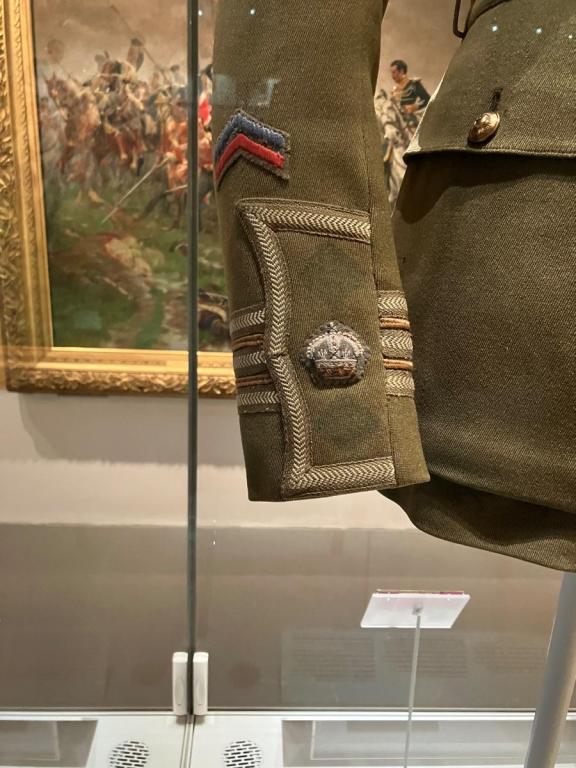
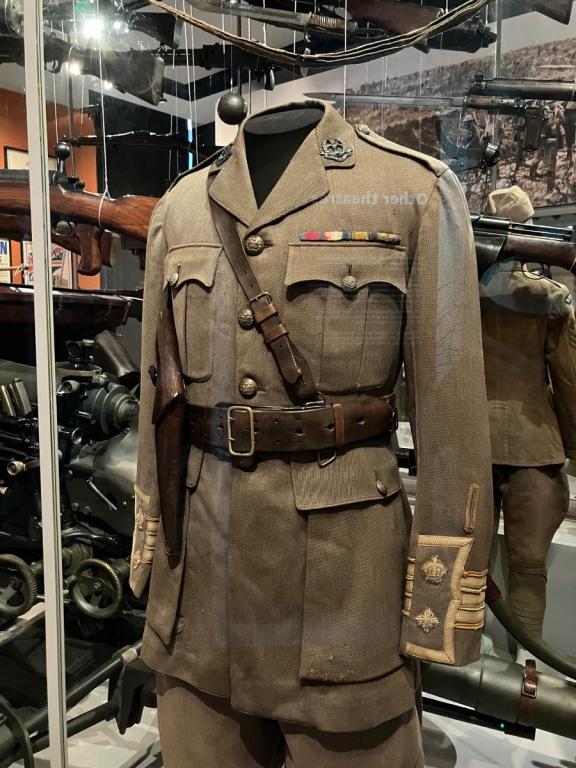
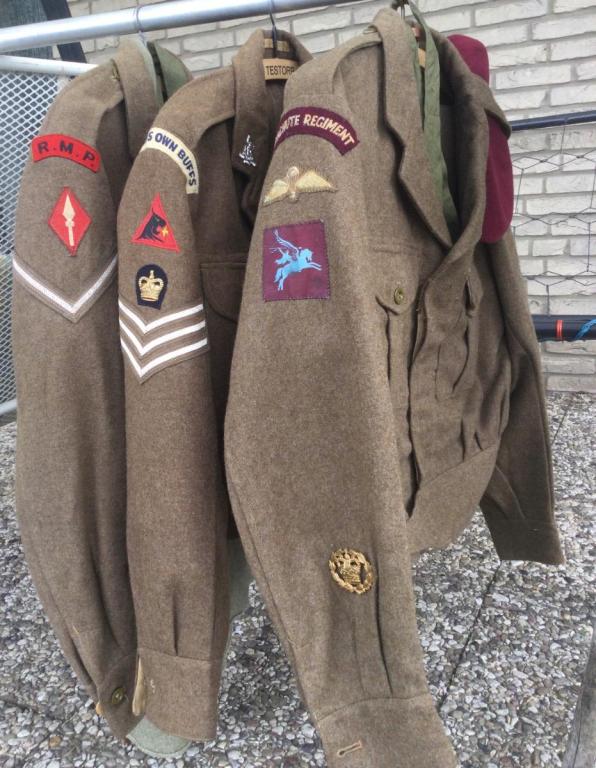
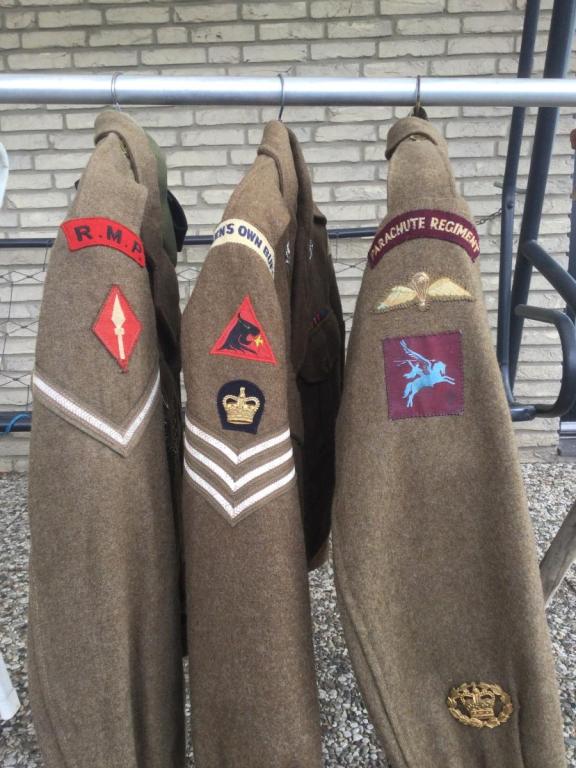


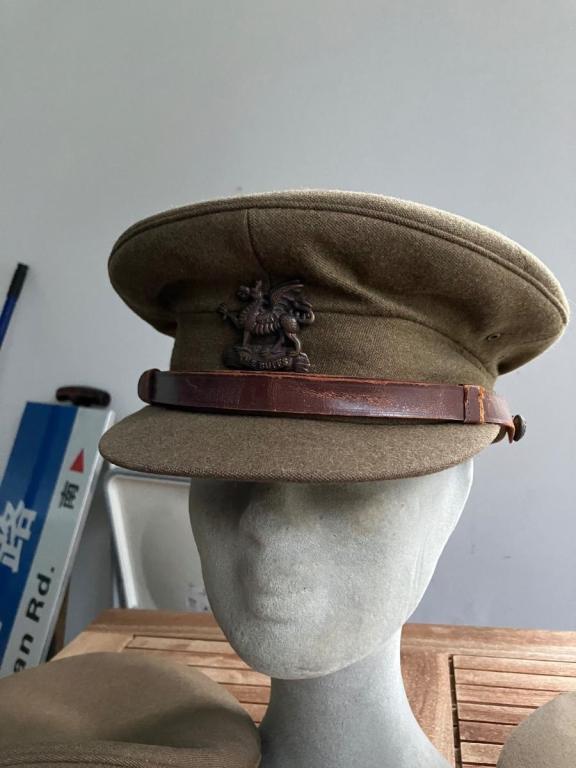
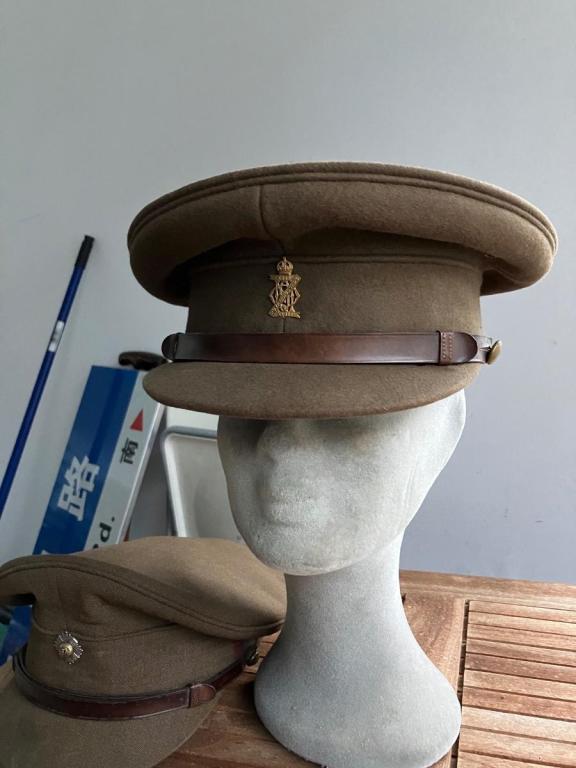

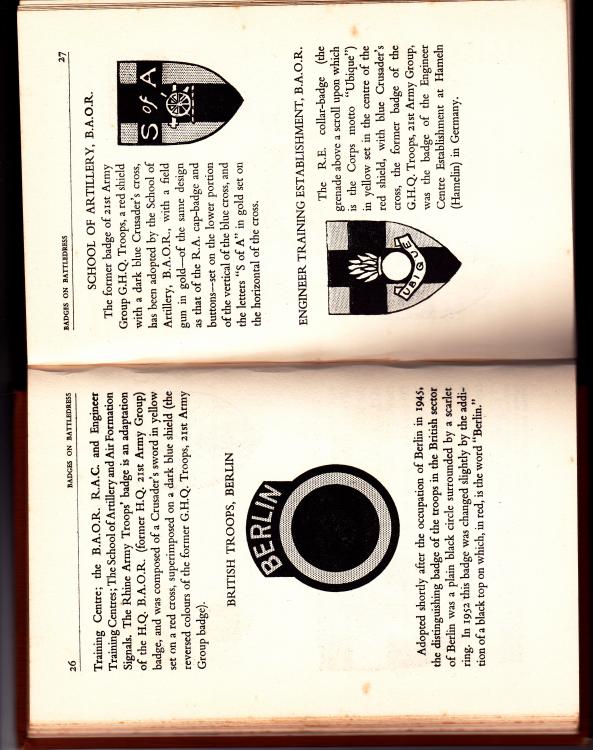


Electronic Stethoscope, anyone know about this?
in Great Britain: Militaria: Badges, Uniforms & Equipment
Posted
I have just googled the NSN on the box and this came up:
https://de-de.facebook.com/RAFLECONFIELD/
If you scroll down you will find a picture of the stethoscope being demonstrated.
Robert